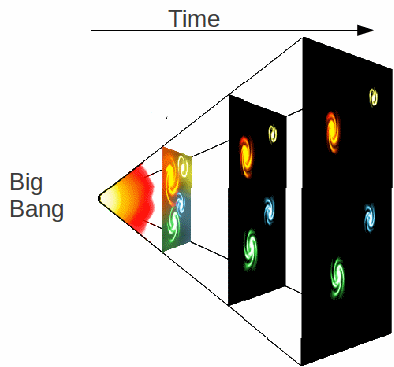Until the twentieth century, most people – because this was taught by many religions - thought the Universe was unchanging and eternal. When the fist big telescope were built, ideas soon changed. Astronomers observed all galaxies and clusters of galaxies were moving away from us. The Universe was getting bigger. Tracing the motion of the galaxies backwards in time means they must all have been very close together. All in the same place in fact, so the Universe started from a single point, of infinite density, pressure and temperature. An explosion occurred an in that instant the Universe was created. This is called the 'Big Bang'.

Like all scientific theories the Big Bang needs to be supported by evidence. Evidence for the Big Bang includes:
The Universe is expanding. Whichever direction we look in, galxies are moving away from us.
There is an echo of the bang, in the form of the 'cosmic microwave background radiation'. This was predicted in 1948 and discovered in 1965.
The proportions of helium (24%) and heavier elements are what would be expected from the Big Bang.
Assuming the Universe stated from a Big Bang, we can estimate the age of the Universe. If we assume the Universe has been expanding at a constant rate since it stated, the age is between 10,000 billion and 20,000 billion years old. In fact we know the Universe is more than about 12,000 billion years old because this is the age of the oldest stars. More accurate calculations using the cosmic microwave background radiation give the age of the Universe as 13,700 billion years, plus or minus 200 million years.
